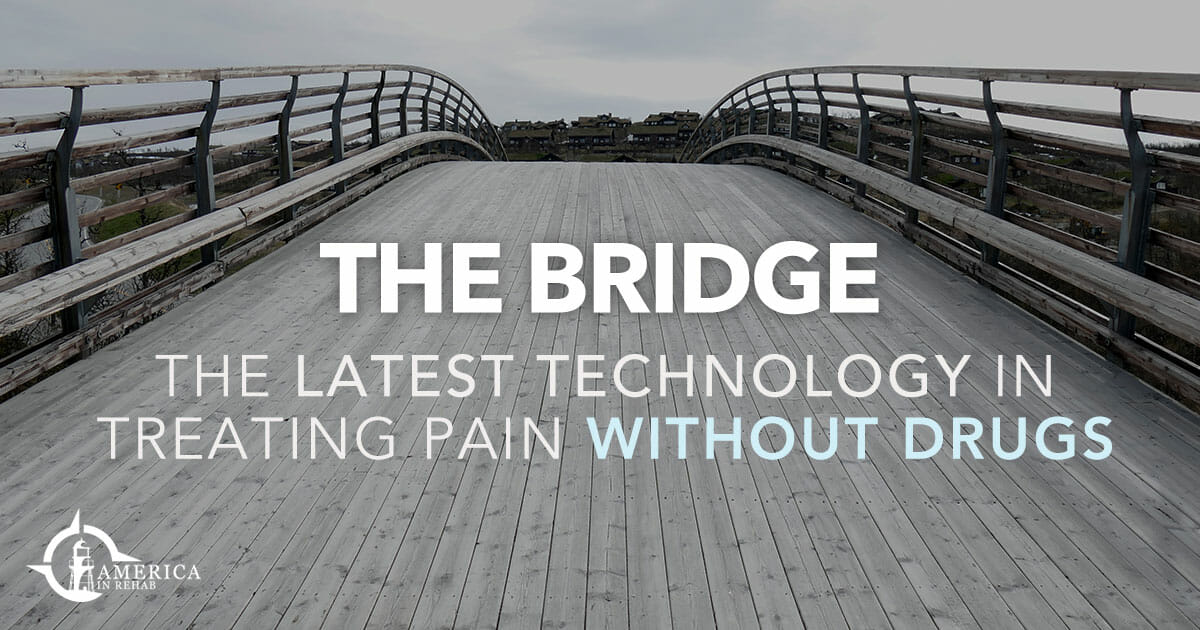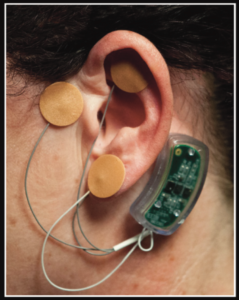 Today, we know more about the nature of addiction – and how to treat it – than ever before. Contrary to prior beliefs that drug addicts are “morally flawed and lacking in willpower,” science has shown us that addiction is an issue of physical and mental health. This means that, according to the National Institute on Drug Abuse (NIDA), in order to treat addiction, we must have a deeper understanding of the brain and human behavior.
Today, we know more about the nature of addiction – and how to treat it – than ever before. Contrary to prior beliefs that drug addicts are “morally flawed and lacking in willpower,” science has shown us that addiction is an issue of physical and mental health. This means that, according to the National Institute on Drug Abuse (NIDA), in order to treat addiction, we must have a deeper understanding of the brain and human behavior.
Learn more about The Bridge at Bridge-Rep.com.
Environmental factors certainly come into play, but research has also revealed that there exist genetic and biological considerations that influence how the disease of addiction develops in an individual, and how it progresses. Addiction recovery and behavioral health experts agree that to properly treat addicts, clinicians cannot ignore one of the greatest biological barriers to recovery – the physical pain of the detox process, and the patients’ fear of that pain.
The Painful Withdrawal From Addiction
The pain and fear of withdrawal pose a huge gap between addiction and sobriety – a gap which many healthcare professionals have tried, unsuccessfully, to close.
According to the U.S. Library of Medicine, withdrawal symptoms are many, including the following:
- Agitation
- Anxiety
- Muscle aches
- Insomnia
- Runny nose
- Sweating
- Yawning
- Abdominal cramping
- Diarrhea
- Dilated pupils
- Goose bumps
- Nausea
- Vomiting
Seeing this list, one can begin to understand why someone would opt for the “high” of addiction over the displeasure of getting sober.
In fact, the National Institute on Drug Abuse states that 40 to 60 percent of those seeking treatment for addiction ultimately relapse, leaving their treatment program and returning to addiction.
For many reasons, we continue to study how to address addiction. One of those reasons is the cost absorbed by Americans as a result of substance abuse. NIDA reports that addiction and abuse of everything from nicotine to alcohol to illicit and prescription drugs cost Americans more than $700 billion per year in “increased health care costs, crime and lost productivity.”
Costly in both the literal and figurative sense, drug abuse must be addressed through solutions that are both innovative and research-based.
The Medications Available For Addiction
There are a variety of medications available through rehabilitation facilities, all aimed at supporting patients through withdrawal. The medications work to cleanse the body of the substance to which the patient has become addicted. It is a grueling process.
Suboxone
This opioid-based medication is a combination of buprenorphine and naloxone, and it works to block the effects of opioids such as pain relief and feelings of well-being. The problem is that these effects are exactly what lead patients to abuse the drugs in the first place, so the loss of relief can make withdrawal an extraordinarily uncomfortable process. Although it is used to treat addiction, Suboxone can also be habit-forming if dosage is not closely monitored. It can cause upset stomach, nausea, vomiting, constipation and diarrhea.
Methadone
This opioid is used to treat addiction. It reduces the withdrawal symptoms that people experience when abstaining from heroin. Both Suboxone and methadone can cause breathing problems in patients, so those suffering from asthma or other breathing conditions should disclose these to their doctor so that alternative treatment can be explored.
Vivitrol
This is an injectable substance used to treat drug or alcohol dependence, and it can be effective when used properly. But, like Suboxone and methadone, the side effects can be severe. While this medication can help subside the need to use an opioid or drink alcohol, it can also cause liver damage and more serious and even fatal ailments if mixed with other medications.
The Risks Of Relying On Medication To Treat Addiction
For these and other reasons, researchers are working to identify solutions that can treat addiction, without the residual harmful effects sometimes experienced by patients on medications. Nontraditional methods of treatment are gaining popularity as the idea of addressing dependence on one substance with the use of another has raised concerns about the body’s ability to emerge from such a process healthy and strong.
Treating Pain Without Drugs: Nontraditional Solutions
In the midst of this $700 billion problem, another solution is emerging … one that has the potential to revolutionize the way addiction treatment is managed.
Through a contemporary understanding of how addiction works with the brain, Innovative Health Solutions has come up with a non-narcotic, FDA-cleared device that helps to target the pain and discomfort that is characteristic of withdrawal from opioid addiction.
By easing patients through what is arguably the most challenging phase of the addiction recovery process, this device works with the brain to support patients along the path to overcoming addiction.
The BRIDGE Device To Help With The Pain Of Withdrawal
 The BRIDGE is a small, discrete neuro-stimulation system (NSS) that attaches to the patient’s ear, sending “gentle, electrical impulses directly into the brain via electrodes placed on your nerve endings found in and around the ear.”
The BRIDGE is a small, discrete neuro-stimulation system (NSS) that attaches to the patient’s ear, sending “gentle, electrical impulses directly into the brain via electrodes placed on your nerve endings found in and around the ear.”
The electrical impulses sent through the electrodes target the areas of the brain most damaged by addiction, blocking pain signals that travel through the spinal column. This act of blocking pain is crucial, as the first few days of being weaned off a drug can be torturous.
In short, the BRIDGE is a tiny tool that sticks to the patient’s ear and signals the brain to block the physical and emotional distress suffered during withdrawal.
Relief is often felt within 10 minutes, and nothing is ingested by the patient. This research-based opiate epidemic solution makes it possible for those who choose to take action to heal from the disease of addiction to do so gently and effectively.
The BRIDGE Is A Groundbreaking Device
 The device should be placed on the patient by a licensed clinician, and it attaches externally behind the ear with thin electrodes that adhere to various areas of the ear itself. In this age of technology, the BRIDGE is minimally obtrusive and can go as unnoticed as a Bluetooth headset, earbuds attaching to one’s cell phone, or even a hearing aid.
The device should be placed on the patient by a licensed clinician, and it attaches externally behind the ear with thin electrodes that adhere to various areas of the ear itself. In this age of technology, the BRIDGE is minimally obtrusive and can go as unnoticed as a Bluetooth headset, earbuds attaching to one’s cell phone, or even a hearing aid.
Once the BRIDGE has been installed – a process taking only 15 minutes – patients describe the relief of pain, reduction of sweating, shaking and anxiety, as well as feelings of calm and relaxation … all within half an hour. Those who walk into a clinic with extreme discomfort, nervousness and fear have been witnessed walking out with a smile, and a noticeably calm and soothed demeanor after using the BRIDGE.
“Phenomenal”
See Mathews’s full interview about the BRIDGE by clicking on the link below:
https://vimeo.com/innovativehealthsolution/review/172016651/c9f21757b3
A Solution At A Crucial Time
Patients are instructed to wear the device for five days before having it removed, and then they are placed in a long-term assistance program, which often includes counseling and medication-assisted treatment. These are the most critical five days of an addict’s recovery process because, as mentioned previously, the withdrawal symptoms can be so severe that many people never make it to the stage of long-term assistance or counseling. They often quit, opting for the unfortunate state of addiction over the painful process of recovery.
The BRIDGE is an innovative opiate epidemic solution to the distress of withdrawal.
In 2014, the U.S. National Library of Medicine reported that there were 435,000 heroin users in the United States and more than 4 million people who were users of non-medical narcotic pain relievers. Not only does the BRIDGE have the potential to drastically reduce this national number, but it can offer an economic boost to the nation, as it is American-made. Innovative Health Solutions is a company based out of Indiana, so the device’s success not only points to addiction recovery, but also to the state’s (and country’s) economic development.
Where The BRIDGE Is Used
VA hospitals and clinics across the nation are already implementing this innovative technology to relieve post-surgical chronic and acute pain. It has been tested on more than 30,000 patients, and the effects are undeniable.
The Union County Opiate Treatment Center has also used the BRIDGE on dozens of patients. Of the first 37 to be treated with the BRIDGE, all have made it through the initial withdrawal phase and continued on to the long-term treatment phase.
Of those who continued, 89 percnet succeeded in completing the entire process. Compare that to the 40 to 60 percent relapse rate reported by the NIDA, and it is clear why so many are reaching out to Innovative Health Solutions to learn more about this cutting-edge product.
Drawbacks Of The Device
The drawbacks of using the BRIDGE are minor. First, although it is extremely safe, water resistant and low voltage, the device should not get wet. If the batteries get wet, it will simply stop working. Patients need not fear any sort of electrical shock. Patients have been able to take showers and wash their hair by simply holding a dry washcloth over the device.
There have also been rare side effects reported, including slight skin irritation, bleeding, pain or infection at the site of the device, dizziness, fainting, and an allergic reaction to the adhesive or tape used to attach it. Those experiencing any of these symptoms should contact their clinician.
It’s Time To End The Opioid Epidemic
Previous attempts at addressing the growing drug addiction problem in the United States have, quite frankly, not worked. The Centers for Disease Control (CDC) reported that in 2014, opioids killed more than 28,000 people – more than any other year on record. The BRIDGE has proven results, and can drastically lower these numbers.
An experienced medical team coupled with the biological and technological accuracy of the BRIDGE can optimize your outcomes in recovery. It’s time to reclaim your life.
If you (or someone you know) is ready to recover and has been held back by the fear associated with withdrawal pain, now is the time to act. For more information on the BRIDE, see what WDRB in Kentucky had to say about the device, or contact us to learn more.




